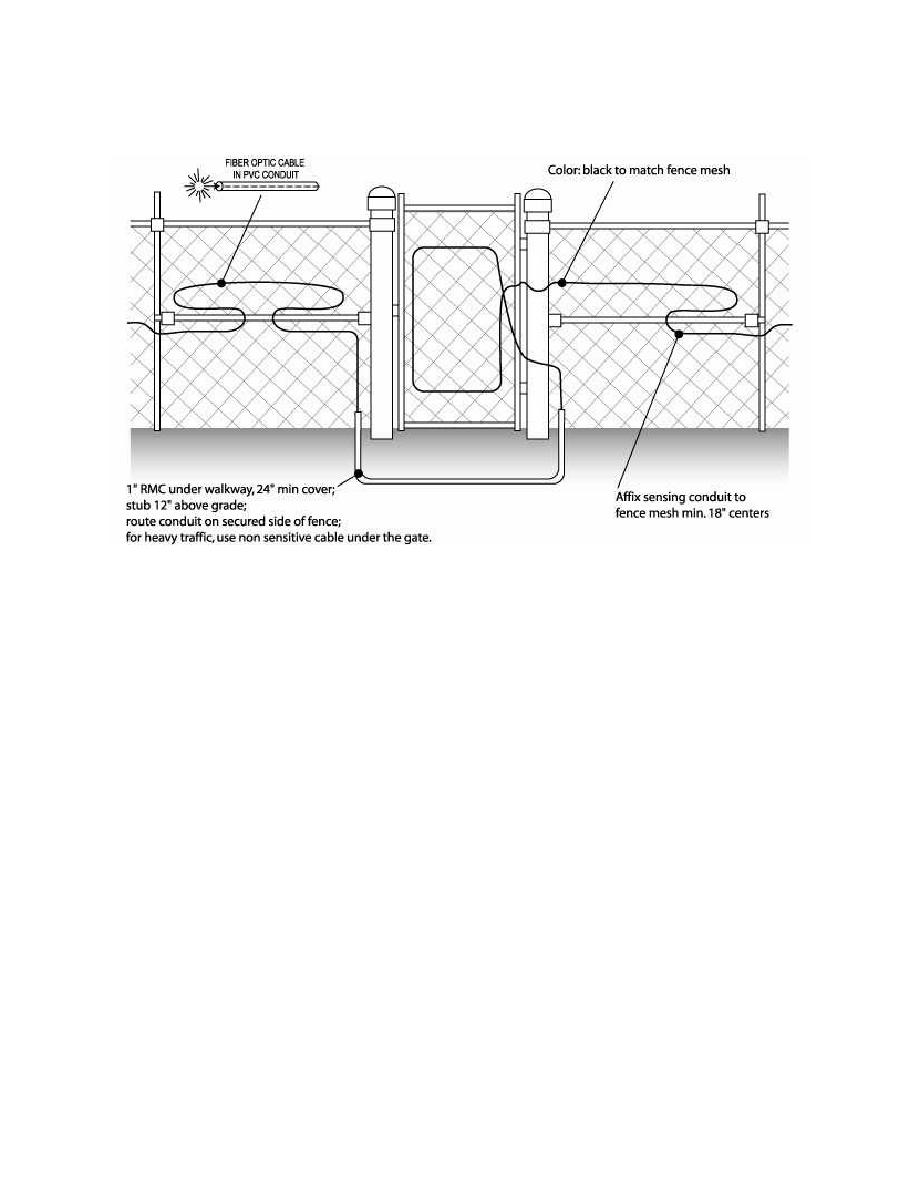
UFC 4-021-02NF
27 September 2006
change 1, 23 October 2006
Figure 5-11. Typical Fiber Optic Fence Detection System
5-4.5
Other Exterior Sensors
5-4.5.1 Buried Cable There are two common types: buried ported cable and buried
fiber-optic cable. The two principle advantages of buried cable are that (a) it is covert,
and (b) it follows the terrain. A limitation is buried cable systems do not work well with
shrubbery or trees on it and require landscaping and maintenance. It is important that
the cable be buried to a uniform depth. Changes in soil conductivity can effect the
sensor readings.
5-4.5.2 Ported Cable. Ported cable comes in two principal configurations, Single
cable and paired cable. A single cable system uses one cable to create a sensing field
approximately 6 feet in diameter around the cable. Paired cable systems use two cables
routed in parallel one to two feet apart. One cable transmits and the other receives a
signal to create the sensing field.
5-4.5.3
Fiber Optic. Fiber optic lines can be used to monitor pipelines or manholes.
5-4.5.4 Wide Area Sensors: Wide area sensors such as radar can be employed on
logical approach paths for large terrain or water territories/boundaries. Wide area
sensors can assist response forces with early alerting or tracking of intruders. This
technology approach has the advantage of being able to detect intruders beyond the
defined perimeter. In other words, the system can detect intruders before they have
crossed the protected area's perimeter.
5-4.6
False Alarm Causes for Exterior Sensors. Table 5-3 displays typical false
alarm causes for exterior IDS sensors. Snowfall, removal of snow, winds, temperature
90


 Previous Page
Previous Page
